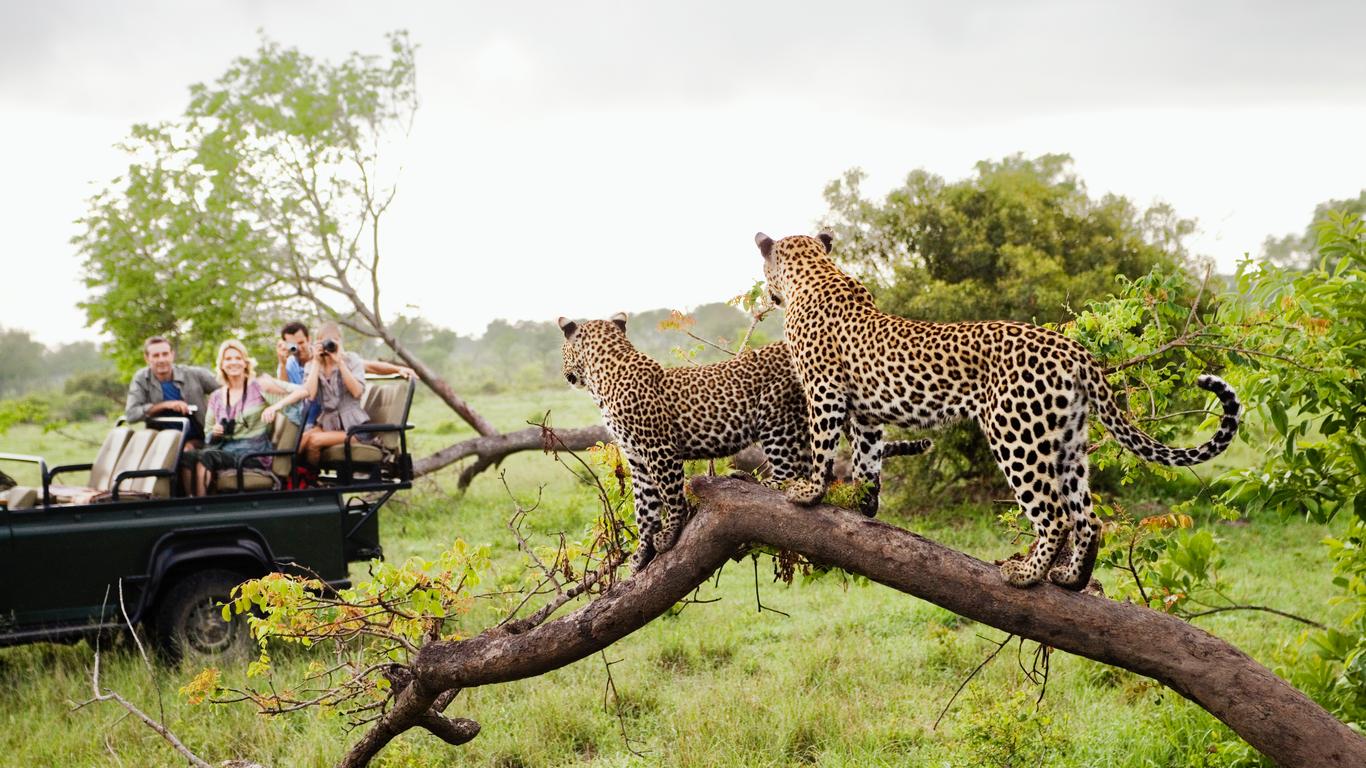Exceptional Wildlife Encounters in September
As September rolls around, Kruger National Park transitions into a premier safari destination featuring some of the best wildlife viewing experiences globally. During this spring month, the park becomes a flourishing hub of activity, allowing tourists to connect with nature amidst stunning landscapes. The exceptional visibility coupled with the thriving wildlife ensures that travelers can encounter a breathtaking array of species in their natural habitat.
Weather Conditions and Wildlife Activity
The climate in Kruger during September is particularly welcoming, with daytime temperatures averaging around 28°C (82°F) and crisp mornings at about 12°C (54°F). This range makes it ideal for game drives, enhancing the overall experience for wildlife enthusiasts and photographers alike. The transitional weather facilitates wildlife interactions, with many species congregating around waterholes that remain full despite the dry conditions.
Visual Advantages and Natural Amphitheaters
September endorses remarkable visibility for spotting wildlife thanks to sparse vegetation and clear sightlines. As the foliage thins, game drives can expect encounters with majestic beings such as lions, leopards, and elephants. The park creates natural theaters where the drama of predator-prey dynamics unfolds, offering visitors front-row seats to some of nature’s most captivating spectacles.
Accommodation Trends and Visitor Statistics
Recent trends indicate a competitive edge for accommodation within Kruger, with rest camps experiencing occupancy rates soaring to 84.2%. On average, luxury lodges fetch around R9,605 per night, though they maintain slightly lower occupancy at 72.1%. This pricing strategy allows operators to cater to diverse consumer demographics, creating a marketplace of options for varying budgets and needs.
Emerging Opportunities in Luxurious Accommodations
New infrastructures and enhancements are being introduced to improve visitor experiences. Notably, Masiya’s Camp at Royal Malewane, launched in June 2025, combines luxury tented facilities with an emphasis on conservation and cultural heritage. This trend aligns with the increasing demand for eco-friendly luxury accommodations appealing to sophisticated travelers.
September’s Biodiversity and Ecological Highlights
Wildlife behavior reaches dramatic levels in September, with predator-prey interactions becoming particularly vivid. This month marks a crucial period for animals as they gather at reliable water sources that offer unique opportunities for encounters. Photographer and wildlife enthusiasts alike revel in the chances to capture stunning images as dynamic interactions unfold.
Migratory Bird Sightings
The month is also notable for the return of migratory bird species including European bee-eaters and yellow-billed kites, enriching Kruger’s biodiversity. These seasonal changes not only attract general wildlife enthusiasts but also specialized birding groups and photographers, broadening the appeal of the park beyond the traditional Big Five seekers.
Market Positioning Against Competitors
Kruger National Park’s strategic location and developed infrastructure provide significant advantages over competitors such as the Masai Mara in Kenya. While the Mara showcases the famous Great Migration, Kruger offers a more accessible experience for visitors from Johannesburg and surrounding regions. It is particularly attractive to families and those looking for fewer malaria risks and easier self-drive options.
Community and Conservation Initiatives
Conservation efforts enhance Kruger’s appeal to travelers who prioritize responsible tourism. Anti-poaching initiatives utilize advanced technologies like drone surveillance, showcasing active wildlife protection efforts that resonate with environmentally conscious visitors. By engaging local communities, tourism in Kruger drives positive change, ensuring that both people and wildlife benefit.
Current Booking Trends and Economic Forecasts
Despite starting the year at approximately 10% below prior levels, both forward bookings for peak periods remain robust, signaling a strong interest in quality safari experiences. Operators are adapting, with around 55% of safari bookings now managed through tour operators, reflecting the increasing complexity of arrangements and clients’ desire for expert guidance.
Price Dynamics and Market Growth
Between 2023 and 2025, accommodation pricing trends show marked increases, with bush lodges rising by 11.7% and luxury lodges by 11.2%. These patterns highlight underlying demand and enable operators to carve out predictable cost structures for packages, ensuring that tourists receive optimal value in line with their expectations.
Visitor Patterns and Integration Opportunities
Kruger National Park continues to attract visitors, reaching nearly two million annually, creating both opportunities and challenges in managing capacity and visitor flows. Integrating itineraries with nearby attractions such as the Namaqualand wildflower season or mountainous experiences in the Drakensberg enhances client stays and boosts revenue.
Conclusion: Embracing September’s Abundance
The month of September combines ideal weather, peak wildlife activity, and the necessary infrastructure that positions Kruger National Park as a must-visit destination for travelers seeking adventure and connection to nature. As the peak safari season draws enthusiastic tourists, it fosters sustainable business relationships and amplifies Kruger’s identity as a critical component of Africa’s wildlife heritage. For those eager to explore the wonders of nature, sailing and boating adventures await just as fiercely as the majestic animals roaming the savannah.
For the best yacht and boat rentals suited for every adventure, GetBoat.com serves as an excellent resource for enthusiasts keen on ocean escapades and river explorations.

 Unleashing the Best of September in Kruger National Park">
Unleashing the Best of September in Kruger National Park">
